
Angela Anaïs Juana Antolina Rosa Edelmira Nin y Culmell was a French-born American diarist, essayist, novelist, and writer of short stories and erotica. Born to Cuban parents in France, Nin was the daughter of the composer Joaquín Nin and the classically trained singer Rosa Culmell. Nin spent her early years in Spain and Cuba, about sixteen years in Paris (1924–1940), and the remaining half of her life in the United States, where she became an established author.

Henry Valentine Miller was an American novelist, short story writer and essayist. He broke with existing literary forms and developed a new type of semi-autobiographical novel that blended character study, social criticism, philosophical reflection, stream of consciousness, explicit language, sex, surrealist free association, and mysticism. His most characteristic works of this kind are Tropic of Cancer, Black Spring, Tropic of Capricorn, and the trilogy The Rosy Crucifixion, which are based on his experiences in New York and Paris. He also wrote travel memoirs and literary criticism, and painted watercolors.

Tropic of Cancer is an autobiographical novel by Henry Miller that is best known as "notorious for its candid sexuality", with the resulting social controversy considered responsible for the "free speech that we now take for granted in literature." It was first published in 1934 by the Obelisk Press in Paris, France, but this edition was banned in the United States. Its publication in 1961 in the United States by Grove Press led to obscenity trials that tested American laws on pornography in the early 1960s. In 1964, the U.S. Supreme Court declared the book non-obscene. It is regarded as an important work of 20th-century literature.
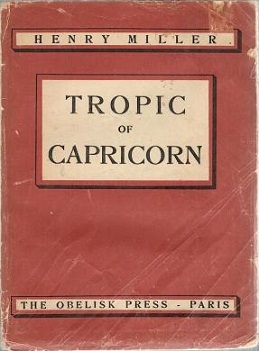
Tropic of Capricorn is a semi-autobiographical novel by Henry Miller, first published by Obelisk Press in Paris in 1939. A prequel of sorts to Miller's first published novel, 1934's Tropic of Cancer, it was banned in the United States until a 1961 Justice Department ruling declared that its contents were not obscene.

The Orchard Keeper is the first novel by the American novelist Cormac McCarthy. It won the 1966 William Faulkner Foundation Award for notable first novel.

The Diary of Anaïs Nin is the published version of Anaïs Nin's own private manuscript diary, which she began at age 11 in 1914 during a trip from Europe to New York with her mother and two brothers. Nin would later say she had begun the diary as a letter to her father, Cuban composer Joaquín Nin, who had abandoned the family a few years earlier.
Alfred Perlès (1897–1990) was an Austrian writer, who was most famous for his associations with Henry Miller, Lawrence Durrell, and Anaïs Nin.
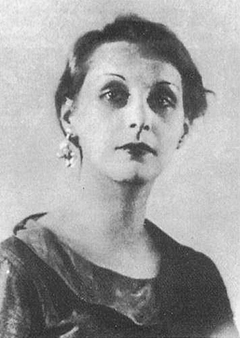
June Miller was the second wife of novelist Henry Miller. He wrote prolifically about her and their relationship in his books, usually using the pseudonyms Mona or Mara interchangeably. She also appears prominently in the early diaries of Anaïs Nin.
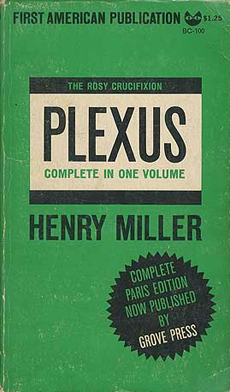
The Rosy Crucifixion, a trilogy consisting of Sexus, Plexus, and Nexus, is a fictionalized account documenting the six-year period of Henry Miller's life in Brooklyn as he falls for his second wife June and struggles to become a writer, leading up to his initial departure for Paris in 1928. The title comes from a sentence near the end of Miller's Tropic of Capricorn: "All my Calvaries were rosy crucifixions, pseudo-tragedies to keep the fires of hell burning brightly for the real sinners who are in danger of being forgotten."

Abraham Rattner was an American artist, best known for his richly colored paintings, often with religious subject matter. During World War I, he served in France with the U.S. Army as a camouflage artist.

Black Spring is a book of ten short stories by the American writer Henry Miller, published in 1936 by the Obelisk Press in Paris, France. Black Spring was Miller's second published book, following Tropic of Cancer and preceding Tropic of Capricorn. The book was written in 1932-33 while Miller was living in Clichy, Hauts-de-Seine, a northwestern suburb of Paris. Like Tropic of Cancer, the book is dedicated to Anaïs Nin.

Lawrence Clark Powell was an American librarian, literary critic, bibliographer and author of more than 100 books. Powell "made a significant contribution to the literature of the library profession, but he also writes for the book-minded public. His interests are reflected in the subjects that recur throughout his writings; these are history and travel, especially concerning the American Southwest, rare books, libraries and librarianship, the book trade, and book collecting."

Aller Retour New York is a novel by American writer Henry Miller, published in 1935 by Obelisk Press in Paris, France.
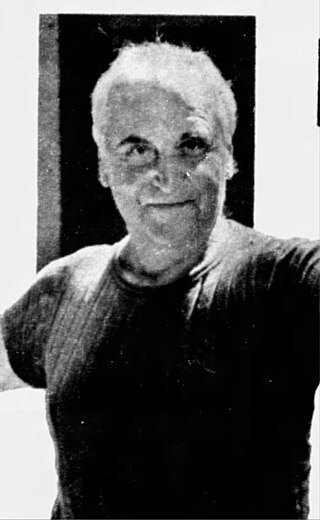
Jean "Yanko"Varda was an American artist, best known for his collage work. Varda was one of the early adopters of the Sausalito houseboat lifestyle that was popular in the 1960s–1970s.
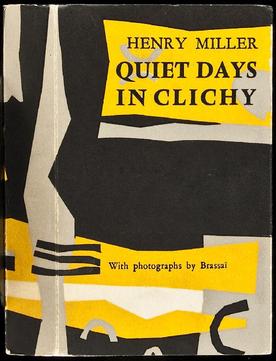
Quiet Days in Clichy is a novella written by Henry Miller. It is based on his experience as a Parisian expatriate in the early 1930s, when he and Alfred Perlès shared a small apartment in suburban Clichy as struggling writers. It takes place around the time Miller was writing Black Spring. According to his photographer friend George Brassaï, Miller admitted the title is “completely misleading.”
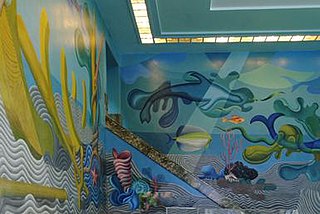
Hilaire Harzberg Hiler was an American artist, psychologist, and color theoretician who worked in Europe and United States during the mid-20th century. At home and abroad, Hiler worked as a muralist, jazz musician, costume and set designer, teacher, and author. He was best known for combining his artistic and psychoanalytical training to formulate an original perspective on color.
The following is a bibliography of Henry Miller by category.

Big Sur and the Oranges of Hieronymus Bosch is a memoir written by Henry Miller, first published in 1957, about his life in Big Sur, California, where he resided for 18 years.

Anne Poor was an American artist most known for her paintings and sketches created during World War II, while serving as an official art correspondent in the United States Army. However, Poor's complete oeuvre also consists of still life's and landscapes created in a range of mediums, including oil, pastel, ink, pencil, and watercolor.
Doldrums is the musical identity of Canadian singer, producer and visual artist Airick Asher Woodhead. Doldrums began in 2010 as a moniker to release home recordings before expanding into a live band and releasing three LPs: Lesser Evil (2013) on Arbutus Records, The Air Conditioned Nightmare (2015) on Sub Pop records, and Esc (2017) on Endless.
















